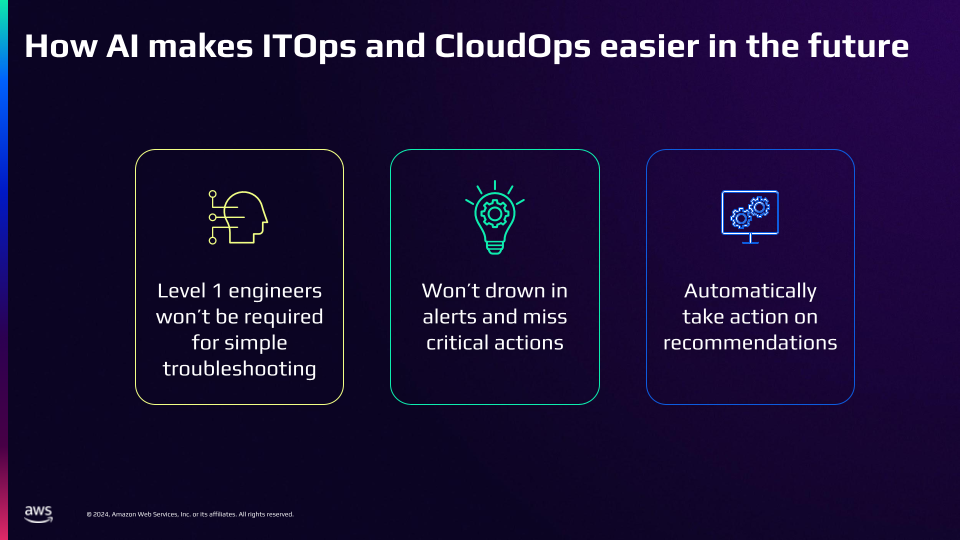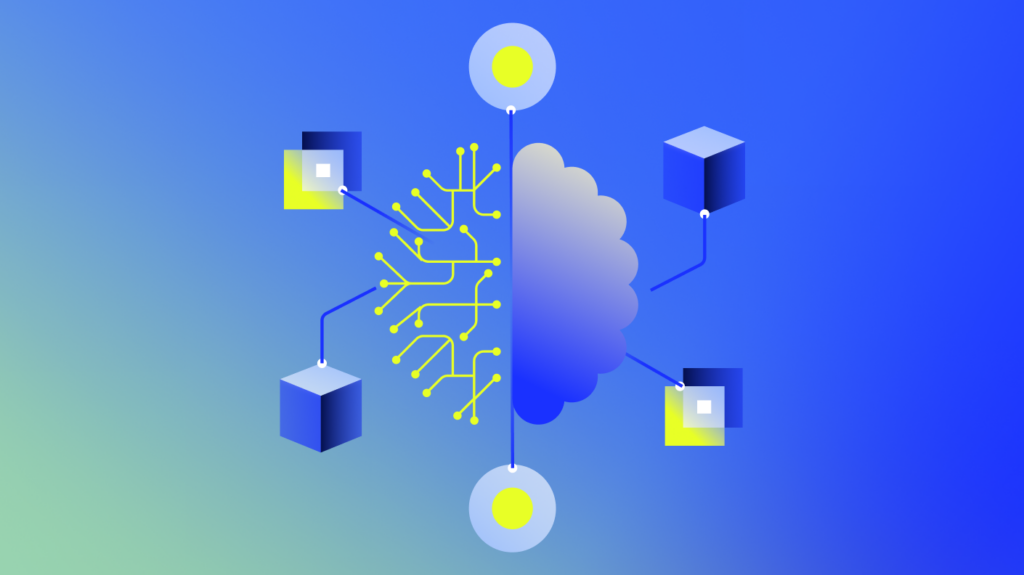The scene is familiar to any IT operations professional: the dreaded 3 AM call, multiple monitoring tools showing conflicting status indicators, and teams pointing fingers instead of solving problems. For managed service providers (MSPs) supporting hundreds or thousands of customers, this challenge multiplies exponentially. But at AWS re:Invent 2024, Synoptek’s team revealed how they’ve fundamentally transformed this reality for their 1,200+ customer base through AI-powered observability.
Key takeaways





The true cost of tool sprawl: When more tools mean more problems
“In the before times, our enterprise operations center was watching six different tools looking for alerts and anomalies,” shares Mike Hashemi, Systems Integration Engineer at Synoptek.
This admission resonates with MSPs worldwide, where operating with multiple disparate tools has become an accepted, if painful, norm.
The true cost of this approach extends far beyond simple tool licensing. Neetin Pandya, Director of Cloud Operations at Synoptek, paints a stark picture of the operational burden: “If we have more than thousand plus customers, then we need one or two engineers with the same skill set into different shifts…three engineers for a single tool, every time.” This multiplication of specialized staff across three shifts creates an unsustainable operational model, both financially and practically.
The complexity doesn’t end with staffing. Each monitoring tool brings its own training requirements, maintenance overhead, and integration challenges.
Case in point: when different tools show conflicting statuses for the same device, engineers waste precious time simply verifying if alerts are real instead of solving actual problems. This tool sprawl creates a perfect storm of increased response times, decreased service quality, and frustrated customers.
Breaking free from traditional constraints
Synoptek’s transformation began with a fundamental shift in their monitoring approach. Rather than managing multiple agent-based tools, they moved to an agentless architecture that could monitor anything generating data, regardless of its location or connection method.
Hashemi shares a powerful example: “We had a device that was not network connected. But it was connected to a Raspberry Pi via serial cable…they realized that they had to watch that separate from the monitoring system. And they said, ‘Hey, can we get this in there?’ And I said, ‘yeah, absolutely, no problem.'”
This flexibility with LogicMonitor’s hybrid observability powered by AI platform, LM Envision, proves crucial for MSPs who need to support diverse client environments and unique monitoring requirements. But the real breakthrough came with the implementation of dynamic thresholds and AI-powered analysis.
Traditional static thresholds, while simple to understand, create a constant stream of false positives that overwhelm operations teams. “If a server CPU spikes up for one minute, drops back down, it’s one CPU in a cluster… you’re going to get an alert, but who cares? The cluster was fine,” Hashemi explains. The shift to dynamic thresholds that understand normal behavior patterns has dramatically reduced this noise.

The cost optimization breakthrough
Perhaps the most compelling aspect of Synoptek’s transformation emerged in an unexpected area: cloud cost optimization. Pandya describes a common scenario that plagues many organizations: “For a safer side, what they do, they can just double the size and put it and deploy at that time. And they don’t know, and they are putting a lot of monthly recurring costs.”
Through comprehensive monitoring and analysis of resource utilization patterns, Synoptek has helped clients achieve an average of 20% reduction in cloud costs. This isn’t just about identifying underutilized resources; it’s about understanding usage patterns over time and making data-driven decisions about resource allocation.
The AI revolution: Empowering teams, not replacing them
The implementation of AI-powered operations will mark a fundamental shift in how Synoptek delivers services, with early indications pointing towards at least an 80% reduction in alert noise. But what happens to Level 1 engineers when alert volumes drop so dramatically? Synoptek saw an opportunity for evolution.
“Our L1 engineers who are appointed to see the continuous monitoring, that is no longer needed. We put them into more proactive or business strategic work…especially into DevOps operations support,” Pandya explains. This transformation represents a crucial opportunity for MSPs to elevate their service offerings while improving employee satisfaction and retention.

A new era for managed services providers
As Pandya concludes, “The biggest benefit is not only monitoring the cloud platform, we can manage all of our hyperscale and hybrid platforms as well. And it’s all in one place.” This unified approach, powered by AI and automation, represents the future of managed services.
The transformation journey isn’t without its challenges. Success requires careful planning, from selecting the right pilot clients to training teams on new capabilities. But the results, like improved service levels, reduced costs, and more strategic client relationships, make the effort worthwhile.
For MSPs watching from the sidelines, the message is clear: the future of IT operations lies not in having more tools or more data, but in having intelligent systems that can make sense of it all. The key is to start the journey now, learning from successful transformations like Synoptek’s while adapting the approach to specific business needs and client requirements.
Subscribe to our blog
Get articles like this delivered straight to your inbox








